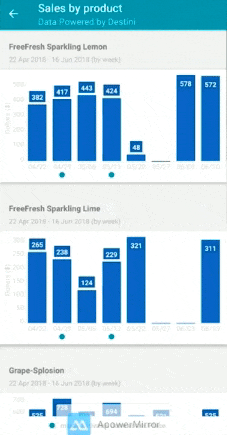Trade marketing is essential to the growth of your brand, and knowing how to best execute it is a key component of sales. While there are many trade marketing strategies that are proven to be effective, there is always room for improvement. In this post, we’ll detail how being data- driven in your trade marketing can lead to better execution, relationships with partners, and ultimately increased sales.
First, let’s do a brief refresher on trade marketing and its importance.
What Is Trade Marketing?
Trade marketing is a B2B marketing strategy that is aimed at supply chain partners instead of consumers. The goal of trade marketing is to gain partners who will get your products on shelves and in front of consumers.
Common trade marketing activities include going to trade shows, offering promotions to potential partners,
advertisements, and building strong personal relationships.
While there are many similarities to traditional marketing, trade marketing is not focused on the final sale but instead on the partners that will end up making the final sale.
Why Is Trade Marketing Important?
Trade marketing is essential for manufacturers, especially in the consumer product good (CPG) industry, to ensure shelf space in stores. Supply chain partners such as distributors, wholesalers, and retailers have many brands to choose from, so it’s key that you set yourself apart from the competition when vying for those valuable store facings.
That’s where trade marketing comes in. Just as it’s necessary to distinguish yourself from competitors at the consumer level, it’s equally important to do this with potential supply chain partners as well.
Trade Marketing Strategies
Now we’ll take a look at some proven trade marketing strategies, and how they can help you secure the shelf space and partnerships you need to grow your brand.
More importantly, we’ll look at how being data-driven in you approach to these strategies can improve their overall success.
1. Trade Shows
Trade shows are a great way to interact with potential partners, increase brand awareness, and demonstrate your brand’s value compared to competitors’. Many wholesalers, distributors, and retailers attend trade shows with the intent of finding new brands to partner with that will bring them sales revenue.
Use this platform to its full potential and make as many impressions as possible. Trade shows are also a great opportunity for creating brand recognition and awareness. Things to consider during your next upcoming trade show include how your booth and displays will look, what types of interactions you’re looking to make, and what information you want to convey.

How Data Can Help
You’re bound to talk with many different partners and people at each trade show. You’ll likely provide demos and samples of your product. Activities data can help to organize and record all of the things you do and interactions you have during the course of the show.
Recording data about these activities on the spot means you can analyze it after the fact. Keep track of who you interacted with, and what was accomplished. You might start to notice trends within your activities, and be able to determine which ones are most successful in achieving your goals.
2. Trade Promotions
Promotions are another great way to separate yourself from the competition. Sometimes, supply chain partners or consumers won’t realize the full value of your brand without a little help. Use promotions to give them that extra push towards choosing your product. Examples of promotions include temporarily reduced prices or in-store displays that grab attention, build brand awareness, and ultimately incentivize people to choose your product over others.
How Data Can Help
Sales data can help you see how much your promotions actually help your sales. By showing you the change in sales at each location before, during, and after each promotion you offer, you get a new level of data-driven insight into which promotions are actually worth it. Using this store-level information, you can tweak and fine tune the style of your promotions to drive the most people to your brand.

3. Relationships
An often overlooked aspect of marketing to supply chain partners is building mutually beneficial relationships with them. As great as your product may be, retailers or distributors will be reluctant to partner with you if they don’t believe that carrying your products will provide them with more revenue than others.
In order for your relationship with your partners to be the most beneficial, make sure that there is frequent communication and accountability on both sides. Building a strong personal relationship will go a long way in securing valuable shelf space.
How Data Can Help
Have data-driven conversations with partners in order to build trust and accountability in your relationships. Use sales data to quantitatively demonstrate the value that your brand could bring to the table. For example, show hard numbers detailing the successes that your brand has had with other retailers. Retailers will be more likely to stock your product if they can quantitatively see the extra revenue they could be gaining.
In addition, your brand will be more accountable, as you will have a more accurate forecast of how much retailers can expect to sell. In the end, this makes it easier for you to deliver on your promises, and build a stronger relationship with each of your partners.
While these trade promotion strategies are proven to be successful, that doesn’t mean there isn’t room to improve. Being more data-driven will allow your brand to take them to the next level, and get the most from each one.




.png?width=480&height=252&name=PRESS%20RELEASE-2%20(4).png)

